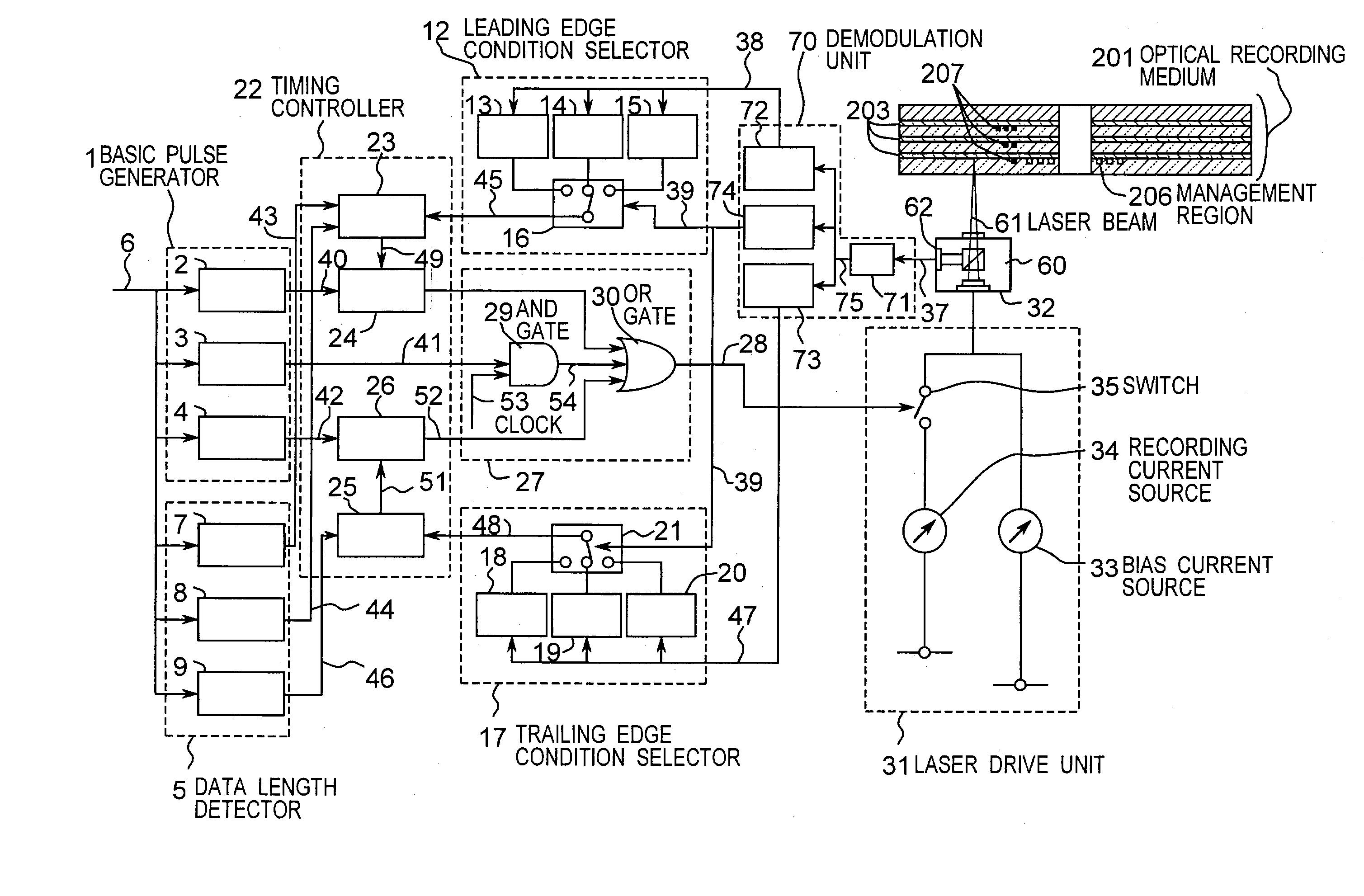Optical recording medium, method for recording on optical record medium, and apparatus for recording on optical record medium
- Summary
- Abstract
- Description
- Claims
- Application Information
AI Technical Summary
Benefits of technology
Problems solved by technology
Method used
Image
Examples
embodiment 1
[0063]FIG. 2 is a sectional view showing an optical recording medium used in a first embodiment of the present invention. In FIG. 2 an optical recording medium 201 includes a plurality of information layers 203 (203a, 203b, 203c) formed on a substrate 202, and the individual information layers are separated by separation layers 204 (204a, 204b). In this embodiment, the multilayer recording layer is composed of, for example, three information layers 203.
[0064]The substrate 202 is made of polycarbonate or other resin material, or glass. On the surface of the substrate, various patterns are formed, such as guide tracks having a specific depth for tracking of beam, pits for address, or pits depending on the management information of the optical recording medium.
[0065]The material for composing the information layers 203a, 203b, 203c is available in two types, that is, the write-once type for recording only once, and the rewritable type for recording repeatedly. The write-once type recor...
embodiment 2
[0097]A second embodiment of the present invention is explained below. When recording in second and subsequent information layers from the light source side, the transmissivity of the information layer varies depending on whether the information layer of the light source layer is in recorded state or unrecorded state. Accordingly, the intensity of the laser beam reaching these information layers varies, and the recording condition at the leading edge and trailing edge may be changed. By contrast, in this embodiment, the independent leading edge recording condition and trailing edge recording condition are set depending on the recorded state of each layer closer to the light source side than the information layer to be recorded.
[0098]FIG. 5 is a sectional view of an optical recording medium. An optical recording medium 501 includes a substrate 202, an information layer 203, a separation layer 204, a protection plate 205, and a layer identifier 207, and the same one as in the first em...
embodiment 3
[0116]In order to correct the recording condition difference due to difference between optical recording media or difference between optical recording apparatuses, this embodiment proposes a method of determining optimum values by learning the leading edge position and trailing edge position of recording pulse in each information layer.
[0117]FIG. 6 is a diagram of sectional view of optical recording medium. Learning regions 601 are provided in the information layers 203a, 203b, 203c for determining the optimum values of delay amount of leading edge pulse and trailing edge pulse. A configuration of an apparatus for recording information in an optical recording medium 501 is shown in FIG. 8, in which a leading edge delay amount change circuit 801 is added to the leading edge pulse delay circuit 24 of the timing controller 22 in FIG. 1, and a trailing edge delay amount change circuit 802 is added to the trailing edge pulse delay circuit 25.
[0118]Referring to a flowchart in FIG. 7, we w...
PUM
 Login to View More
Login to View More Abstract
Description
Claims
Application Information
 Login to View More
Login to View More - R&D
- Intellectual Property
- Life Sciences
- Materials
- Tech Scout
- Unparalleled Data Quality
- Higher Quality Content
- 60% Fewer Hallucinations
Browse by: Latest US Patents, China's latest patents, Technical Efficacy Thesaurus, Application Domain, Technology Topic, Popular Technical Reports.
© 2025 PatSnap. All rights reserved.Legal|Privacy policy|Modern Slavery Act Transparency Statement|Sitemap|About US| Contact US: help@patsnap.com



